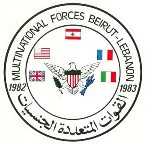magi
Posts: 1529
Joined: 2/1/2014
Status: offline

|
there are a number of articles on Taiwan defense... here are a couple of little ones... with a couple of quotes....
https://foreignpolicy.com/2018/09/25/taiwan-can-win-a-war-with-china/
"This is the best-case scenario for the PLA. But an island docile and defeated two weeks after D-Day is not a guaranteed outcome. One of the central hurdles facing the offensive is surprise. The PLA simply will not have it. The invasion will happen in April or October. Because of the challenges posed by the strait’s weather, a transport fleet can only make it across the strait in one of these two four-week windows. The scale of the invasion will be so large that strategic surprise will not be possible, especially given the extensive mutual penetration of each side by the other’s intelligence agencies.
Easton estimates that Taiwanese, American, and Japanese leaders will know that the PLA is preparing for a cross-strait war more than 60 days before hostilities begin. They will know for certain that an invasion will happen more than 30 days before the first missiles are fired. This will give the Taiwanese ample time to move much of their command and control infrastructure into hardened mountain tunnels, move their fleet out of vulnerable ports, detain suspected agents and intelligence operatives, litter the ocean with sea mines, disperse and camouflage army units across the country, put the economy on war footing, and distribute weapons to Taiwan’s 2.5 million reservists.
"There are only 13 beaches on Taiwan’s western coast that the PLA could possibly land at. Each of these has already been prepared for a potential conflict. Long underground tunnels—complete with hardened, subterranean supply depots—crisscross the landing sites. The berm of each beach has been covered with razor-leaf plants. Chemical treatment plants are common in many beach towns—meaning that invaders must prepare for the clouds of toxic gas any indiscriminate saturation bombing on their part will release. This is how things stand in times of peace.
As war approaches, each beach will be turned into a workshop of horrors. The path from these beaches to the capital has been painstakingly mapped; once a state of emergency has been declared, each step of the journey will be complicated or booby-trapped. PLA war manuals warn soldiers that skyscrapers and rock outcrops will have steel cords strung between them to entangle helicopters; tunnels, bridges, and overpasses will be rigged with munitions (to be destroyed only at the last possible moment); and building after building in Taiwan’s dense urban core will be transformed into small redoubts meant to drag Chinese units into drawn-out fights over each city street."
https://warontherocks.com/2018/10/hope-on-the-horizon-taiwans-radical-new-defense-concept/
"Mines and Missiles
Sea mines are a critical capability at the heart of the Overall Defense Concept. Historically, sea mines have proven difficult to counter, and effective at slowing invasion forces. In the Korean War, the U.S. invasion force at Incheon landed before North Koreans could deploy sea mines. U.S. forces landed quickly, met heavy resistance ashore, and found warehouses full of mines after they cleared the beach. At the attack on Wonson a month later, sea mines were deployed offshore before the planned invasion. Two minesweepers were destroyed by mines while under fire from shore-based artillery, and clearing operations took two weeks. U.S. Marine and Army units embarked on transports had to wait five days offshore for lanes to be cleared, which only happened after North Korean forces abandoned their positions.
The government-led National Chung Shan Institute for Science and Technology (NCSIST), Taiwan’s main designer and manufacturer of defense articles, is currently developing two new types of shallow and deep-water influence mines, which they plan to deploy by 2021. They are also developing a self-propelled mine with a planned deployment date around 2025. Until then, Taiwan has been refurbishing its current mine inventory, which includes domestically manufactured Wan Xiang mines, and MK-6 mines acquired from the United States. Taiwan has also sought U.S.-manufactured MK62 Quickstrike air-deployed mines, which could be rapidly deployed by C-130s or P-3Cs, but the sale of that critical capability has not yet been approved by the U.S. Department of Defense.
The Hsiung Feng 2 and 3 missiles are the other weapons at the heart of the Overall Defense Concept. These missiles are fielded by surface ships and fired ashore from a handful of vulnerable fixed batteries, and from batteries of truck launchers. With the expectation that large surface ships will be primary targets neutralized early in a conflict, the Overall Defense Concept also relies on small fast attack vessels, such as the 112-foot long Kuang Hwa which mounts four Hsiung Feng missiles, and can be quickly reloaded in austere locations such as small fishing ports that dot Taiwan’s coastline. The Taiwan Navy is reportedly acquiring an even smaller vessel that carries two missiles. NCSIST is upgrading missiles and increasing production of anti-ship cruise missiles, land attack cruise missiles, and surface-to-air missiles to arm new ships and launchers, deepen magazines, and ensure that Taiwan’s armed forces have sufficient munitions to hold out for an extended period."
|
 Printable Version
Printable Version







 New Messages
New Messages No New Messages
No New Messages Hot Topic w/ New Messages
Hot Topic w/ New Messages Hot Topic w/o New Messages
Hot Topic w/o New Messages Locked w/ New Messages
Locked w/ New Messages Locked w/o New Messages
Locked w/o New Messages Post New Thread
Post New Thread